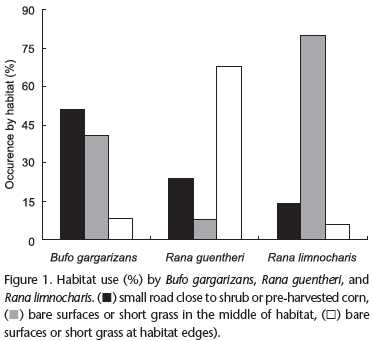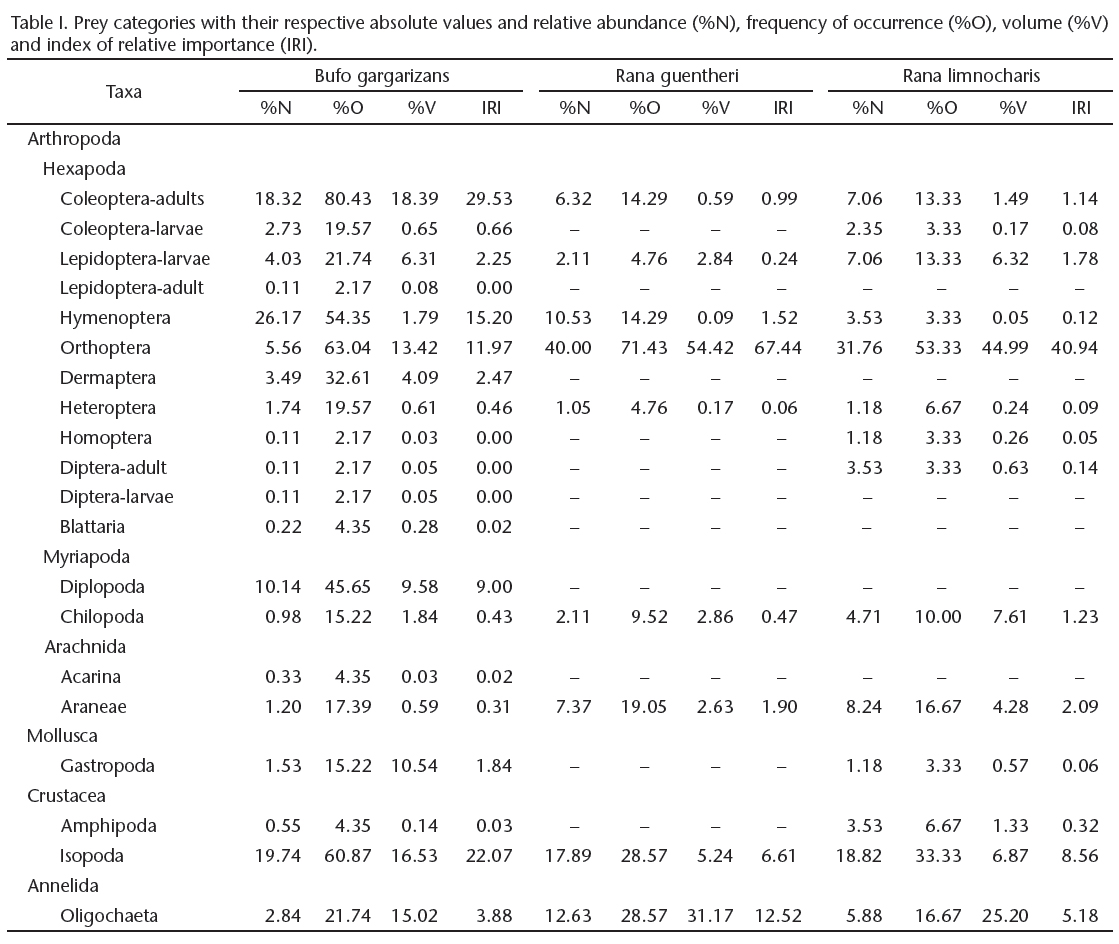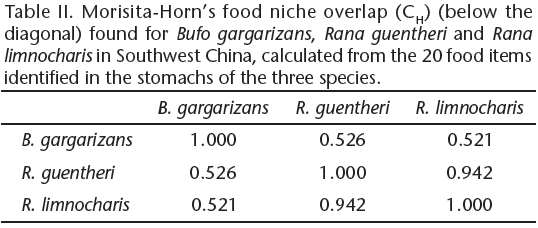We studied the trophic ecology and microhabitat use of the Asiatic toad, Bufo gargarizans Cantor, 1842; Guentheri frog, Rana guentheri (Boulenger, 1882); and the Ricefield frog, Rana limnocharis (Boie, 1834). These three species are common around Nanchong City, in southwestern China, where they live in the same habitat before hibernation. The main objective of this study was to analyze the diets and patterns of coexistence relative to the microhabitat of each species. In the Asiatic toad, based on index of relative importance, the diet was dominated by adult Coleoptera, Isopoda, and Hymenoptera (29.53%, 22.07%, and 15.20%, respectively), while the Guenther's frog and Ricefield frog ingested predominantly Orthoptera (67.44% and 40.94%, respectively). The standardized feeding niche breadth of the Asiatic toad (0.277) was wider than that of the Guentheri frog (0.177) and Ricefield frog (0.269). The overlap in the trophic niche (prey proportion) between the toad and two species of frog was low (toad vs. Guentheri frog, C H = 0.526; toad vs. Ricefield frog, C H = 0.521), while this was high for the two species of frogs (C H = 0.942). The three species also differed in microhabitat use. Asiatic toads showed strong preference for small roads close to shrubs or pre-harvest corn, while Guenther's frogs preferred bare surfaces on habitat edges, and Ricefield frogs showed a preference for bare surfaces as feeding sites in the middle of habitat. The difference in diet observed during three species seems to be explained by the difference in microhabitat use and body size of three species.
Anuran; Asiatic toad; diet; Guentheri frog; habitat; resource partitioning; Ricefield frog



